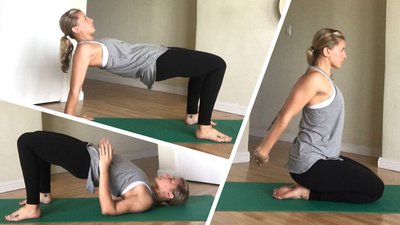The muscles comprising the chest are some of the biggest and strongest in the upper body. But strengthening them often comes at an unfortunate cost.
Hitting big, multijoint movements like bench presses, push-ups, and dips often builds chest strength and size at the expense of flexibility. Over time, this can translate into shoulder pain, less than ideal posture, and just not being as athletic and capable as you look.
For that reason, it's essential to incorporate stretching into your routine. Think of yoga as in-depth stretching that's essential not only to help your body recover after a long training session but also to keep you mobile.
Even if you already attend a class, incorporate yoga to your weekly training routine with these seven easy movements to help open the muscles in your chest while aiding in your post-workout recovery.
Use them after every chest day, or just throughout the week when your shoulders feel tight.
1. Reverse Table
This pose stretches not only the front of your shoulders and chest but your biceps, a challenging spot to reach.

Reverse Table
Directions
- Start seated, with your feet flat on the floor. Place your hands behind you with your fingers pointing toward your heels.
- Squeeze your shoulder blades together as you press through your palms to lift your hips up.
- Hold here for 10 seconds as you breathe deeply in and out through your nose. Repeat three times.
2. Prone Cactus
Prone cactus is an extension of reverse table. It allows you to get deeper into the front deltoids and chest. Unlike reverse table, where you have to hold your weight up to find the stretch, prone cactus allows you to relax and let the weight of your body do the work.
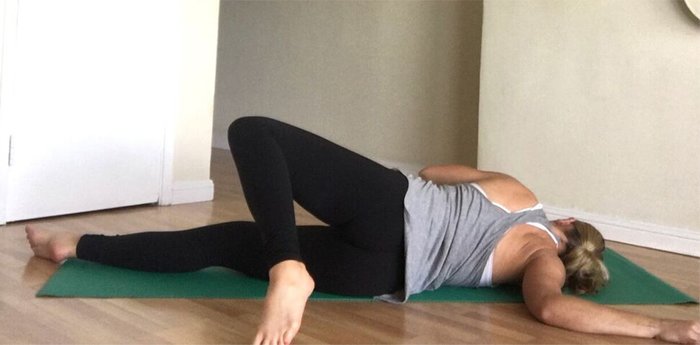
Prone Cactus
Directions
- Start on your belly, with your right arm extended out to the right.
- Relax your right shoulder, and begin to roll onto your outer right hip. Relax your right shoulder down toward the floor, and feel for a stretch in the right pectoral and front deltoid.
- Hold here for 45 seconds, then switch sides.
3. Extended Puppy
This posture is one of my favorites, as it targets the lats and the muscles deep inside the armpits, both of which tie into the shoulder and can contribute to shoulder pain. They're places we don't often stretch, which is why it feels so good to give them some attention.
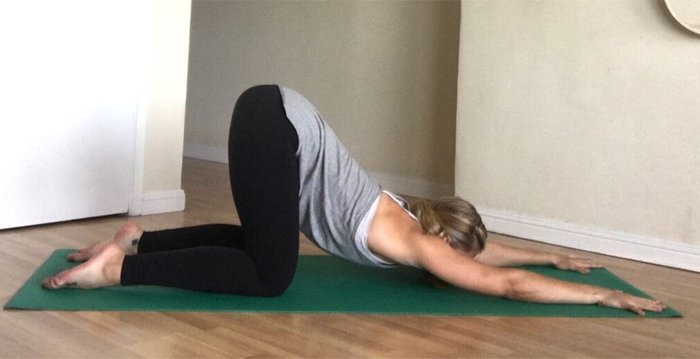
Extended Puppy
Directions
- Begin on your hands and knees, keeping your hips stacked over your knees as you walk your hands forward.
- Press down through your palms as you sink your chest toward the floor.
- Hold here for 30 seconds as you breathe in and out through your nose.
4. Locust
The locust pose teaches you how to draw your shoulder blades together as you actively widen your chest. This translates to added strength, body awareness, and improved posture for the next time you're under the bar in the bench press.
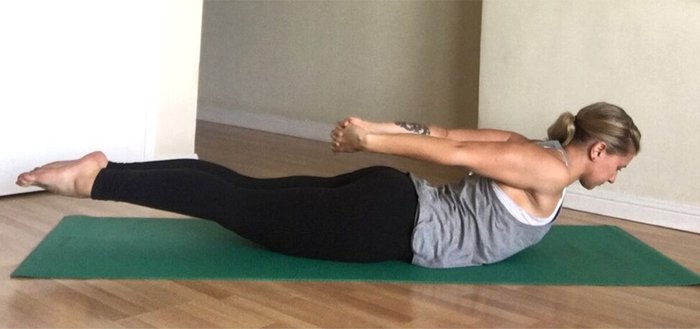
Locust
Directions
- Start on your belly, with your legs extended behind you. Clasp your hands at your lower back.
- Squeeze your shoulder blades together as you draw your heels in. Lift your chest and your heels up.
- Hold this position for 20 seconds. Repeat three times.
5. Seated Clasp Hand
This posture is an extension of locust, but instead of building strength, the focus is stretching the chest and front deltoids. Though this posture is simple, it is very effective.
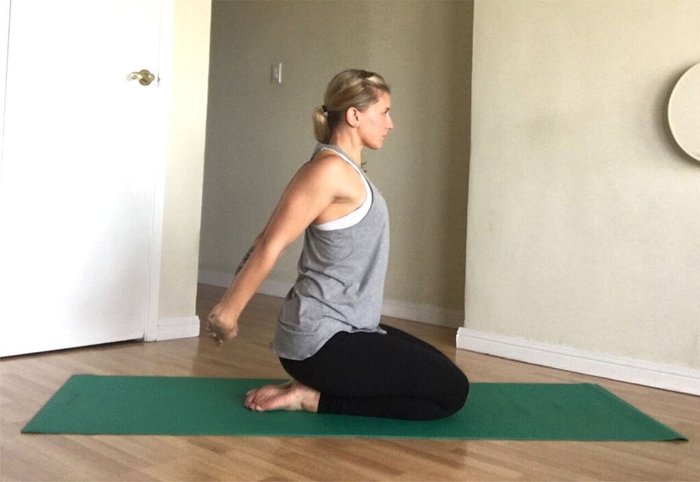
Seated Clasp Hand
Directions
- This posture can be done in any kind of seated or standing position. Just like locust, clasp your hands behind your back, squeeze your shoulder blades together, and extend your arms.
- Stay in this pose for 20-30 seconds, then repeat.
6. Foam roller or block "angels"
This is one of my favorite movements. Not only do I stretch my chest and biceps as I perform the movement, but it also helps to loosens up my rhomboids and trapezius, allowing for greater range of motion in the shoulders.
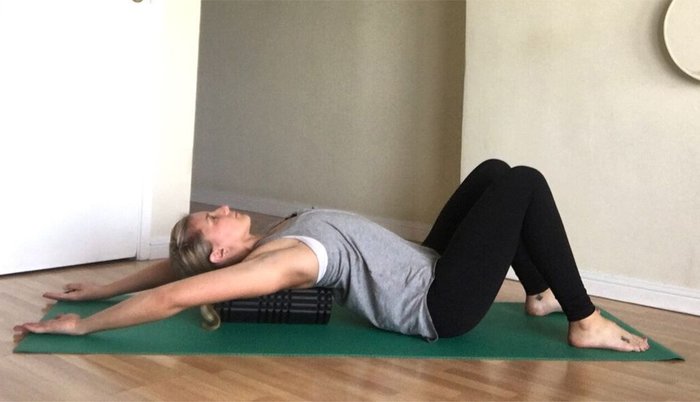
Foam Roller Or Block "Angels"
Directions
- Lie back on a foam roller or block, and place your feet flat on the floor.
- Extend your arms alongside your waist with the palms facing up. Relax the front of your chest as you let your shoulder blades drop along the edges of the roller.
- Slowly slide the backs of your palms along the floor until your arms are overhead, then slowly go back down, similar to a snow angel. Repeat 10 times.
7. Bridge with elbows bent and forearms by sides
This is another simple but highly effective move. When done correctly, you can use the leverage of your upper arms against the floor to widen your chest. This pose is more than just a stretch; it encourages proper positioning of the upper body and healthy movement of the scapula.
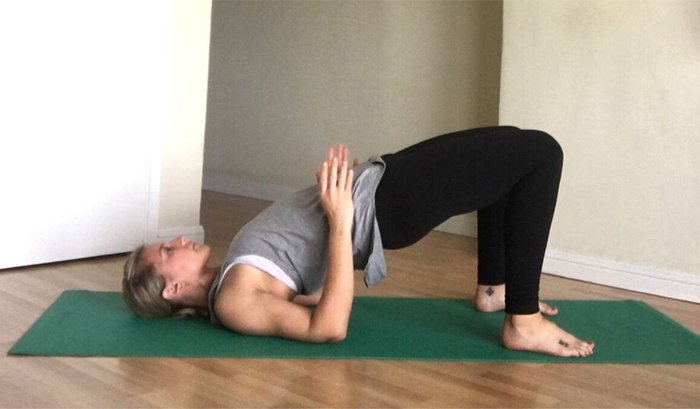
Bridge With Elbows Bent And Forearms By Sides
Directions
- Start on your back, with your feet flat on the ground. Your heels should be about hip-distance apart and close enough that you can touch them with your middle fingers.
- Place your elbows by your sides. Press down through your upper arms as you lift your hips.
- Walk your shoulder blades together, and hold for 20 seconds. Relax your hips down toward the floor, and repeat three times.

